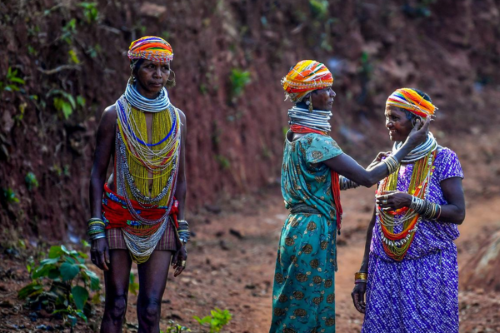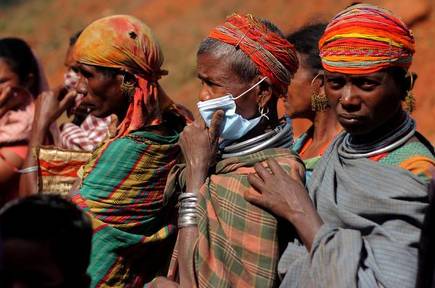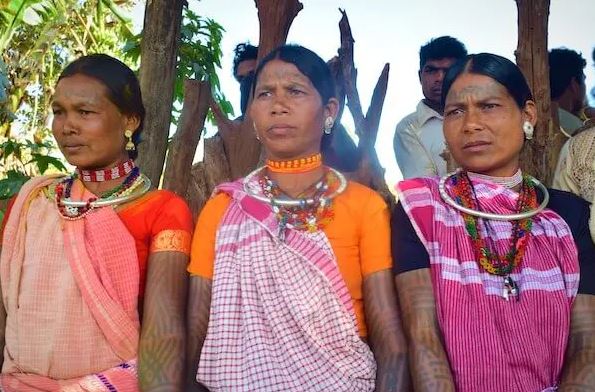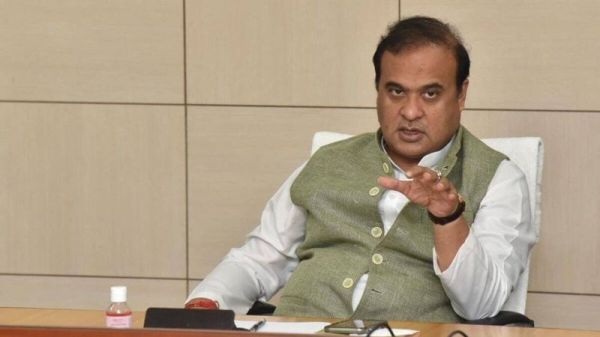Baga Tribe has been specially placed in the category of Pichhauri tribe. That means these people are still considered backward socio-economically.
It has been found that remnants of Ukraine also live in these coastal forests. But when elections come, at least the mention of these temples comes up.
One such interesting case has been seen in Chhattisgarh. Where the Baiga tribe (Baiga tribe) has got housing rights in the state before the assembly elections to be held next month.
On Monday, October 9, especially the Partial Tribal Group (PVTG) got habitat rights in the state. After which this Kamar became the second group after PVTG to get housing rights in the state.
This privilege covers a total of 19 Bagas of this community and around 2,085 families live in the area, population is 6,483.
A special program has been organized by the Gaurela-Pendra-Margahi (GPM) district administration in these areas of Gaurela block.
The Baga community mainly resides in Rajnandgaon, Kawardha, Mungeli, Gaurela-Pendra-Margi (GPM), Manendra-Bharatpur-Chirmiri and Bilaspur in the state. Baga community cosmetics also exists in Madhya Pradesh.
What is housing right?
Habitat provides rights to communities in their traditional areas of residence, socio-cultural ideology, economic and academic expertise, biodiversity and backward knowledge, traditional knowledge of the use of natural structures as well as the protection and conservation of their natural and cultural heritage. Has been done
This right is granted to the PVTG under the Right to Habitat 2006 under Section 3 (1) (e) of the Rocket Tribe and Other Traditional Forest Dwellers (Recognition of Forest Rights) Act. This right is also called FRA i.e. Forest Rights Act.
Additionally, as per Section 2(h) of the FRA, the habitat includes primitive tribal communities in old forests and protected forests and pre-agricultural communities and other forests.
Habitat rights are protecting and promoting traditional and cultural knowledge passed down from the ashram. They are helping the PTG network to unite various government initiatives and various joint initiatives to develop its housing.
States to assign housing rights
Of the 75 PVTGs in India, only three groups have habitat rights. Bharia PVTG got this right first in Madhya Pradesh. After this, Kamar tribe of Chhattisgarh and now Baga tribe have been included in this list.
There are seven VTGs in Chhattisgarh. Who live in 17 out of 33 states. The names of all of them are Kamar, Baga, Pahari Korba, Jhumkedia, Birhor, Pando and Bhujia.
According to the survey, the total population of electricity corporations in Chhattisgarh in 2015-2016 is 2.50 lakh. Whereas according to 2011, the population ratio in Chhattisgarh is 78.22 lakh.
Government Habitat Workshop Process
Bibhor Kumar Dev, Legislative Head, UNDP, United Nations Development Programme, who is providing technical assistance to the administration to implement the Right to Habitat Act.
He said that this process is based on the details given for this purpose in Principles 2014.
Along with this, he said that on the basis of MoTA, traditional tribal leaders of the tribe are consulted about the extent of their culture, industry, business and the same is confirmed by the government. After this it has again been declared a habitat.
Along with this there are four state-level departments (four state-level departments), which include Forest, Revenue, Public Department and Tribal Raj. All these departments are collaborating with the UNDP team to identify what can be called a place of residence.
When did the process of giving housing rights to PVTG started in Chhattisgarh?
According to official sources, the first counseling to grant these rights started in December 2021. The government started with Kamar Restaurant as a pilot project. It is a long and tedious process.
But after the pilot project this process can become faster. PVG are introverted and okra. Building relationships and getting feedback is hard work. They live in their own world and are very happy adopting positions of authority.
The population of Komarar in Char Coconut is 26 thousand 622. Till now, 22 hamlets of Magarlod sub-region of Magarlod development block of Dhamtari district with a population of about 2500 people have got housing rights. Also, out of 88 thousand 317 Baga, 6 thousand 483 have got it.
Will there be any impact of the right to secure habitat?
Shomona Khanna, a lawyer in the Supreme Court of India and former legal advisor to the Union Ministry of Tribal Affairs, said that if anything, this housing right would help PVTGs in getting relief from commercial development nexus for their housing. Because it is good that the temple does not have rights over the land, but if anything is built on the land, then the land and lease of the Gram Sabha will also be taken.
Along with this, he also said that forest rights have legal protection under the Forest Conservation Act, Land Acquisition Act of 2013 and even the SCD/ST Atrocities and Harassment Act. Providing homestead rights under the Forest Rights Act provides an additional layer of legal protection.
Who is baga
Baga Tribe Ekwee PTI (PVTG) is an exclusively French people’s friendly group. Also known by the name Panda and is an ethnic group.
This tribe lives especially in the states of Madhya Pradesh and Chhattisgarh in Central India. Apart from this, this tribe also lives in many nearby states. Which includes Uttar Pradesh and Jharkhand.
These tribals live in Dindori district of Madhya Pradesh and Baga-Chak of Balaghat district and also live in the dense forests of the eastern part.
There are also sub-castes of this tribe. They are Bijwar, Narotiya, Bharotiya, Nahar, Rai Bhana and Kadh Bhana etc. According to 2011 values the number is 17 thousand 387.
Life style of Baga tribe
Jum is cultivated in the Baga tribe forest area and they feel as if they never come to earth because it is like being crushed on their mother’s chest.
No one can say that their mother means to be born again and again by cooking food from the same piece of earth because it becomes useless.
The Bagas live a semi-nomadic life and do Bewar or ‘Dahiya’ farming. Aggression does not mean farming with aggression but with respect. These techniques are also known as ‘Sweden’ agriculture.
For more updates follow Mainbhibharat.










